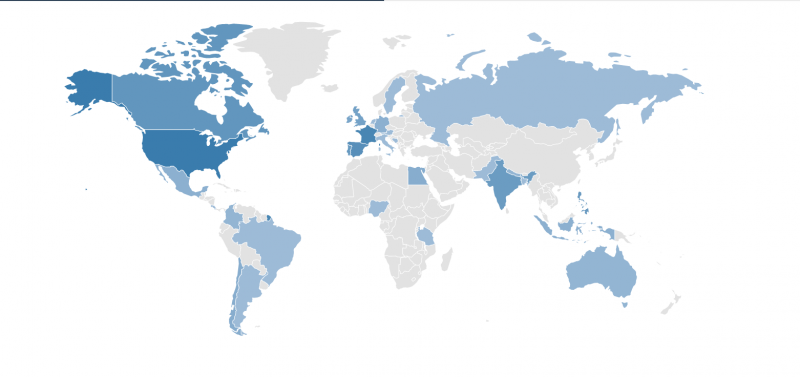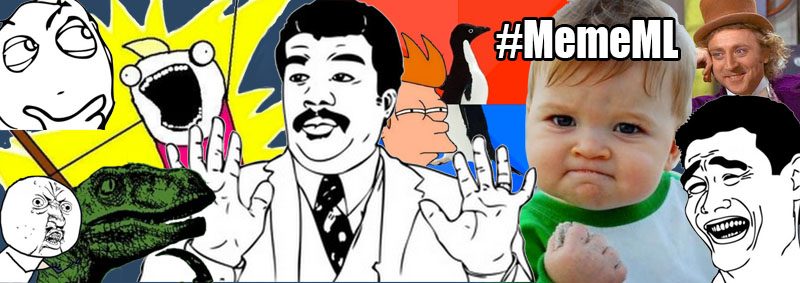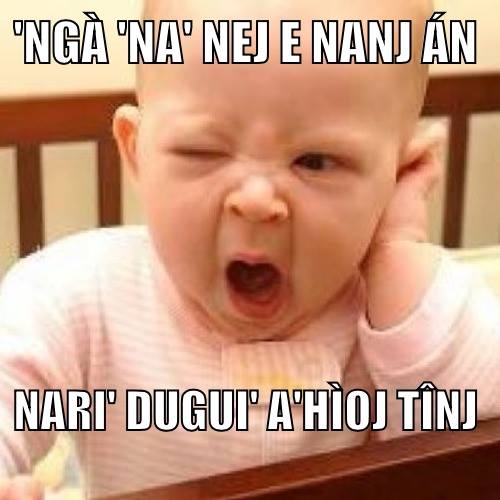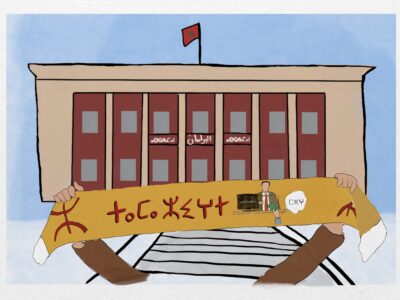For a second straight year, the Mother Language Meme Challenge attracted a wide array of participation from language activists and advocates as a way to highlight the importance of linguistic diversity on the web with a special focus on indigenous, endangered, or minority languages.
Beginning on February 14, the one-week Challenge culminated on February 21, a date that annually commemorates International Mother Language Day. Those who took part created humorous or inspiring memes in their mother language, shared them on their social networks, and encouraged others to do the same. The result was a colorful snapshot of how many these languages are carving out their own space on the internet thanks to the efforts of individuals, organizations, and communities.
Once again, the Challenge brought together existing and new partner organizations and groups working towards language revitalization around the world. See here for the full list of partners for this year’s Challenge.
The main website of the campaign had been translated into 34 languages in 2017, and this year, thanks to the work of volunteers that number increased by 26 new languages that included: Triqui, Odia, Swahili, Somali, Punjabi, Lombard, Hindi, Malgasy, German, Romanian, Bangla, Santali, Igbo, Doteli, Turkish, Aromanian, Extremaduran, Italian, Chinese Mandarin, Breton, Nubian, Gujarati, Nepal Bhasa, Acadian, Serbian, and Huastec.
The Challenge was co-organized by Rising Voices, along with the Living Tongues Institute, First Peoples’ Cultural Council, Indigenous Tweets, Endangered Languages Project, and the Digital Language Diversity Project.
We asked participants to add a hashtag naming the language in which the meme was created, as well as #memeML. As the following word cloud shows, European minority languages were the most well-represented on Twitter.

Word cloud list from #memeML 2018 collected by Keyhole.co
To get a better sense of the geographic locations that participated in the Challenge, a quick glance using the Keyhole Twitter hashtag analytics tool indicated there were original posts or support in the form of retweets from a large part of the world.

Geographic participation in #MemeML 2018 as collected by Keyhole.co
We were also pleased to see participation from new parts of the world, such as Egypt, where Nubian language and culture advocates helped to create memes in their language. As one can see in their translation, many keyboards are unable to replicate the alphabet characters required by this form of writing, so the website was created by using a jpg, further illustrating the challenge that some communities face. We also enjoyed increased participation from India, where local activists helped bring new languages onboard such as Hindi, Odia, Punjabi, and Santali.
While it’s not possible to share all of the memes created during the week of the Challenge, here is a taste of the memes across the globe found on Twitter and Instagram:
Sub-Saharan Africa
Europe
"please tell me more about how Guernsey-French isn't a real language" for #MemeML (though I know this one's too late – thanks for a week of good fun @risingvoices) pic.twitter.com/Hy9vce5cHU
— Adam Clayton (@TheAdamClayton) February 23, 2018
"I will look for you, I will find you, and I will speak to you in #Jèrriais" #MemeML pic.twitter.com/TJSidd2hKS
— L'Office du Jèrriais (@le_jerriais) February 21, 2018
#MemeML unos poucos que yá fixera ha tiempu. #Leonese #Llionés pic.twitter.com/NXrGDzUI6F
— ? ? ? ? ? ? (@Daviid_mdr) February 21, 2018
Middle East and North Africa
@nubian_app #memeML #NubianMeme #NubianProverb #EndangeredLanguages #Nobiin #علمني_نوبي pronounced: hotta Likka Meera pic.twitter.com/RKlrX5QBPl
— The Nubia Initiative (@NubiaInitiative) February 21, 2018
ס׳קומט איצט פֿאָר אַן אינטערנאַציאָנאַלער איניציאַטיוו צו שאַפֿן "מימס" אויף קלענערע שפּראַכן. אָט איז אונדזער באַשטײַער.
Several groups are running an initiative to create memes in indigenous and minority languages. Here is our small contribution@risingvoices @IndigenousTweet pic.twitter.com/ny0b4PKl4s— Yugntruf (@yugntruf) February 20, 2018
North America
#mememl #wetsuweten translates to: “cousin, give me some dried fish” pic.twitter.com/gRdwLzCm4v
— dani_christ (@dogen84) February 19, 2018
Central America & Mexico
Un meme local para los de Xaya | Promocionando un #Internet con más #diversidad lingüística con el Desafío Meme en Lengua Materna 2018 #DILM #Maya #MemeML @gvenespanol @risingvoices
Más info aquí ➡ https://t.co/qcxJcTHnvP pic.twitter.com/PzMbDMIBW5
— Saaz Sánchez (@lussasil) February 16, 2018
#MemeML #QatzijGT #kaqchikel
Diseño: Mariela Miguel. pic.twitter.com/vjyIkiecCU— Qatzij GT (@QatzijGT) February 18, 2018
#DidzaXhidza Desafío de los Memes en las Lenguas Maternas #MemeML pic.twitter.com/RlkBaRhNDP
— Kiado Cruz (@Kiadorindani) February 22, 2018
#memetriqui Ya tengo sueño, nos vemos mañana chiquita.
I'm sleepy, I'll see you tomorrow #memetriqui
South America
Chumgeeluuuu #MemeML #Mapuzugun #MotherLanguageDay #Wallmapu pic.twitter.com/lluj6OQRFm
— MapucheDE (@mapusol) February 21, 2018
Asia
ᱡᱟᱱᱟᱢ ᱯᱟᱹᱨᱥᱤ ᱛᱮ ᱨᱚᱲ ᱫᱚ ᱥᱟᱹᱨᱤ ᱟᱹᱰᱤ ᱨᱚᱢᱚᱡᱽ ᱜᱮ !#MemeML #Santali_Language #ᱥᱟᱱᱛᱟᱲᱤ_ᱯᱟᱹᱨᱥᱤhttps://t.co/i9G4KMjAsz pic.twitter.com/4lkqdcXxWY
— OL CHIKI Tech (@OL_CHIKI_Tech) February 15, 2018
ହେଲେ ମାଲିକେ, ଏ ସୁଆଗ ବୋଇଲେ କିସ ବା? #swag #memeML #Odia #MotherLanguageDay pic.twitter.com/WFeaGQ8w5s
— Prateek Pattanaik (@pattaprateek) February 23, 2018
To find even more memes from the Mother Language Meme Challenge in a variety of global languages, please look for the #MemeML hashtag on Instagram, Twitter, or Facebook. There is also a Facebook group for the Challenge with contributions from all across the world. Thank you to all that participated this year!





